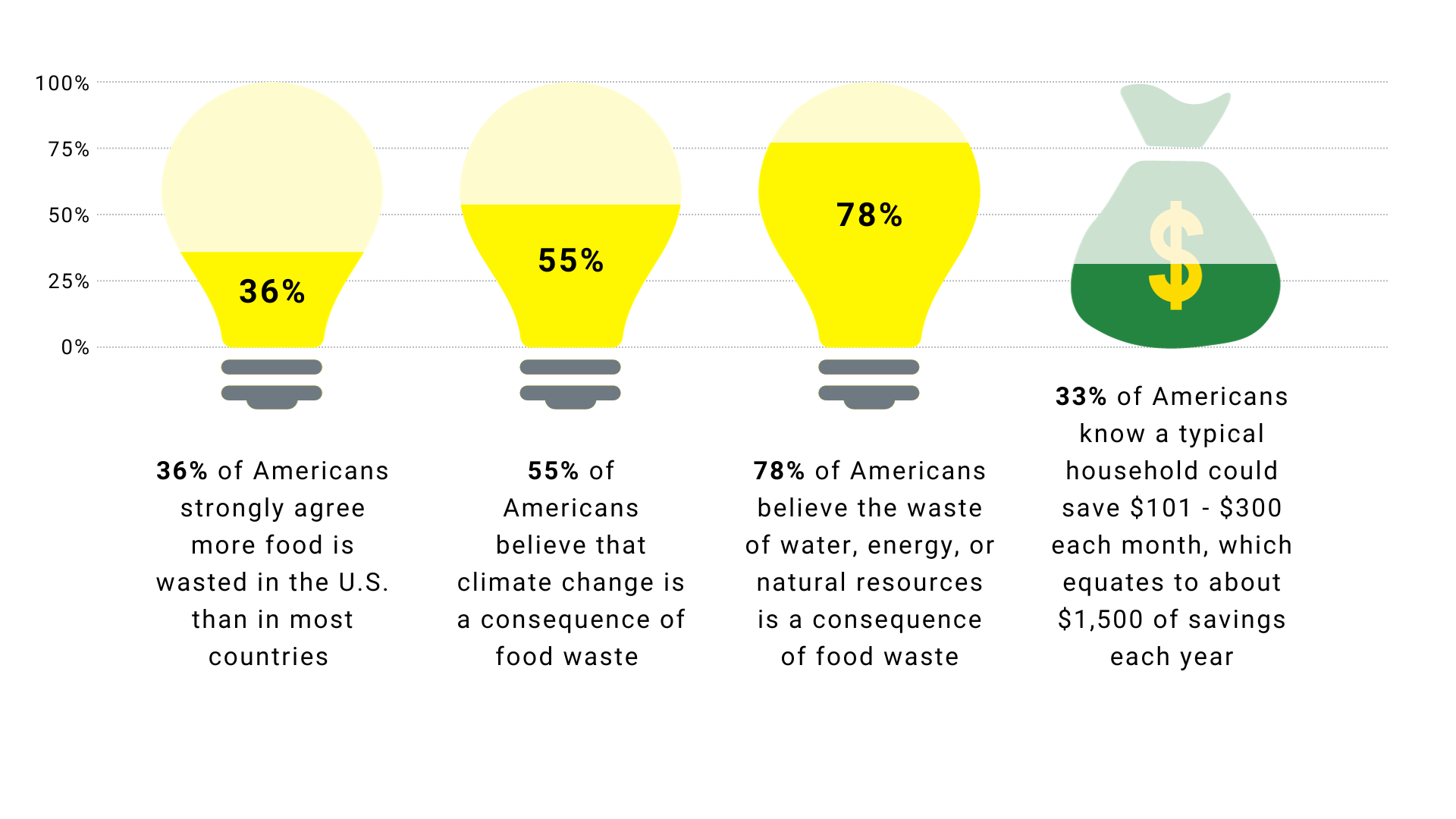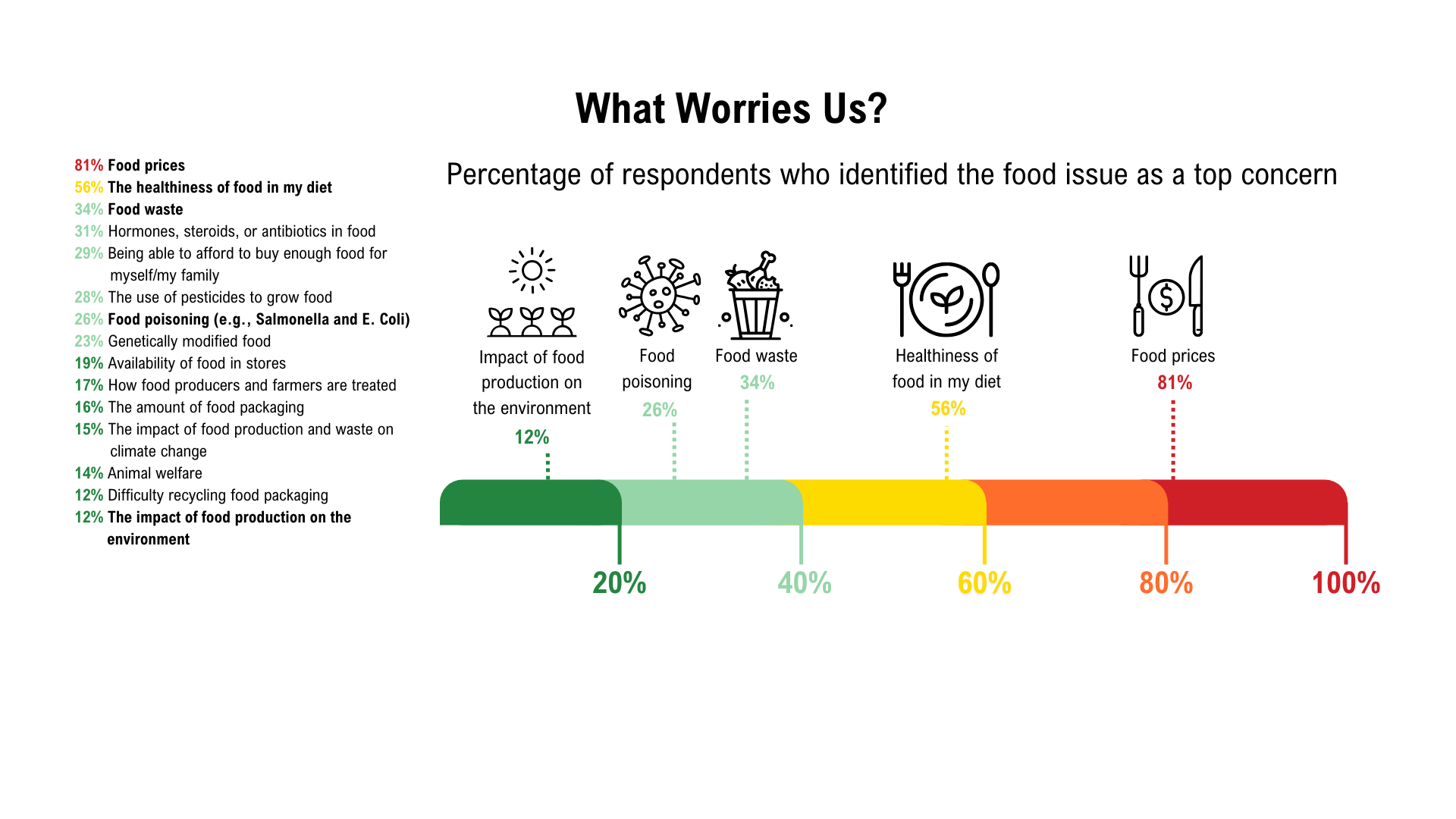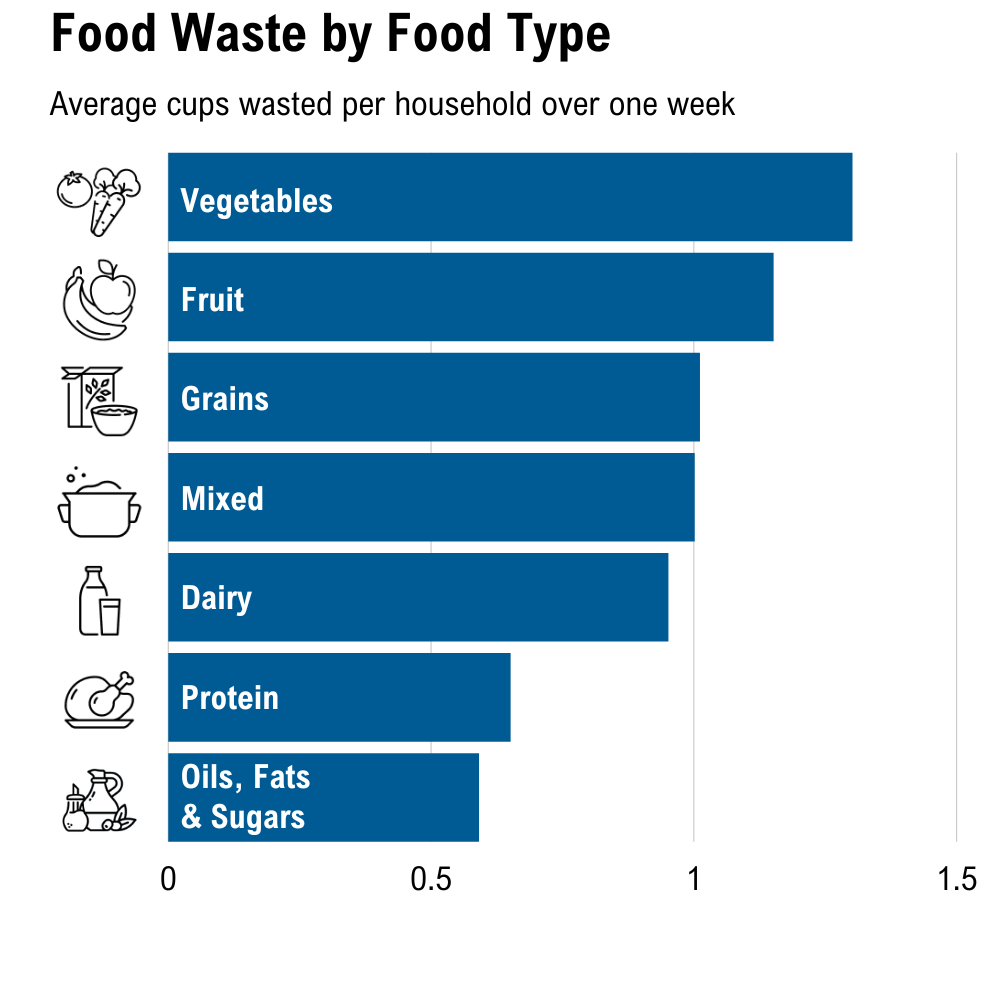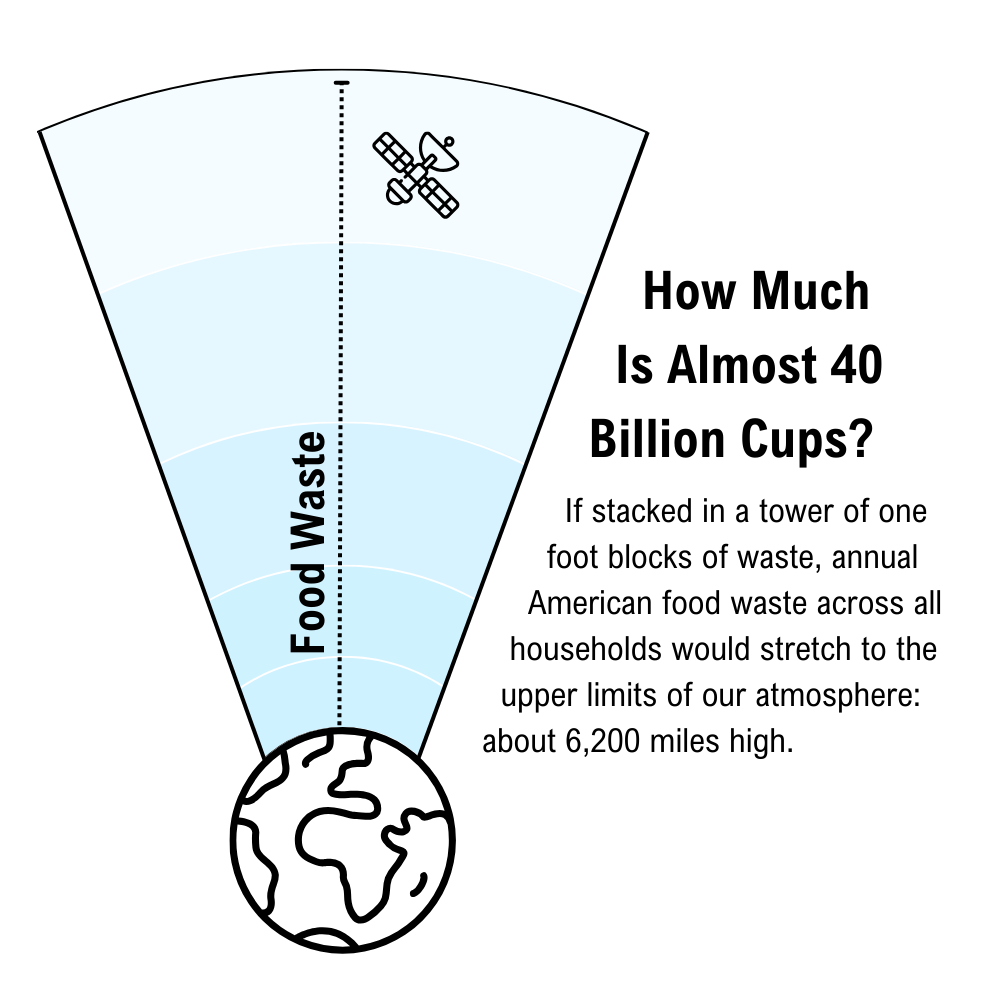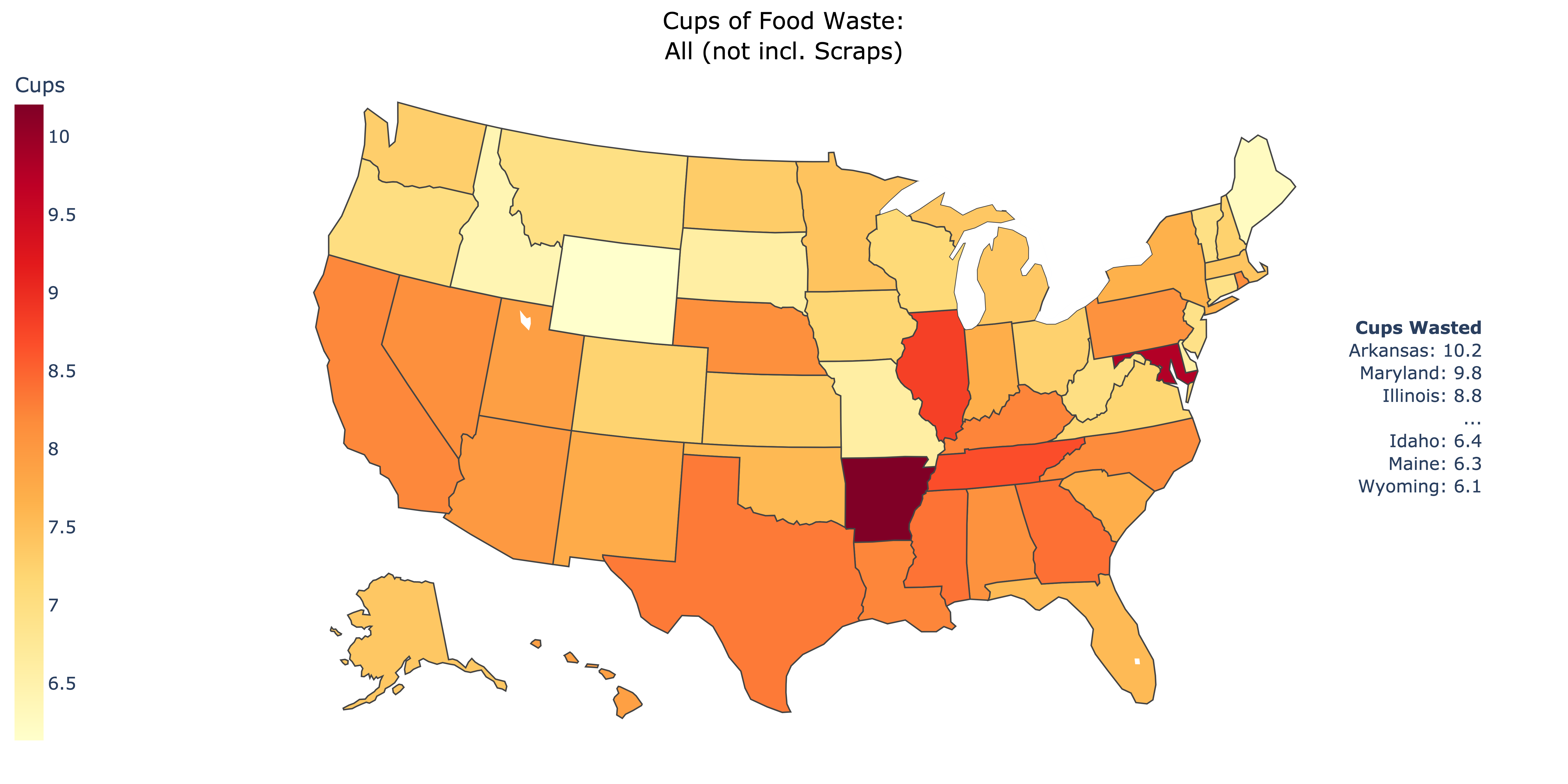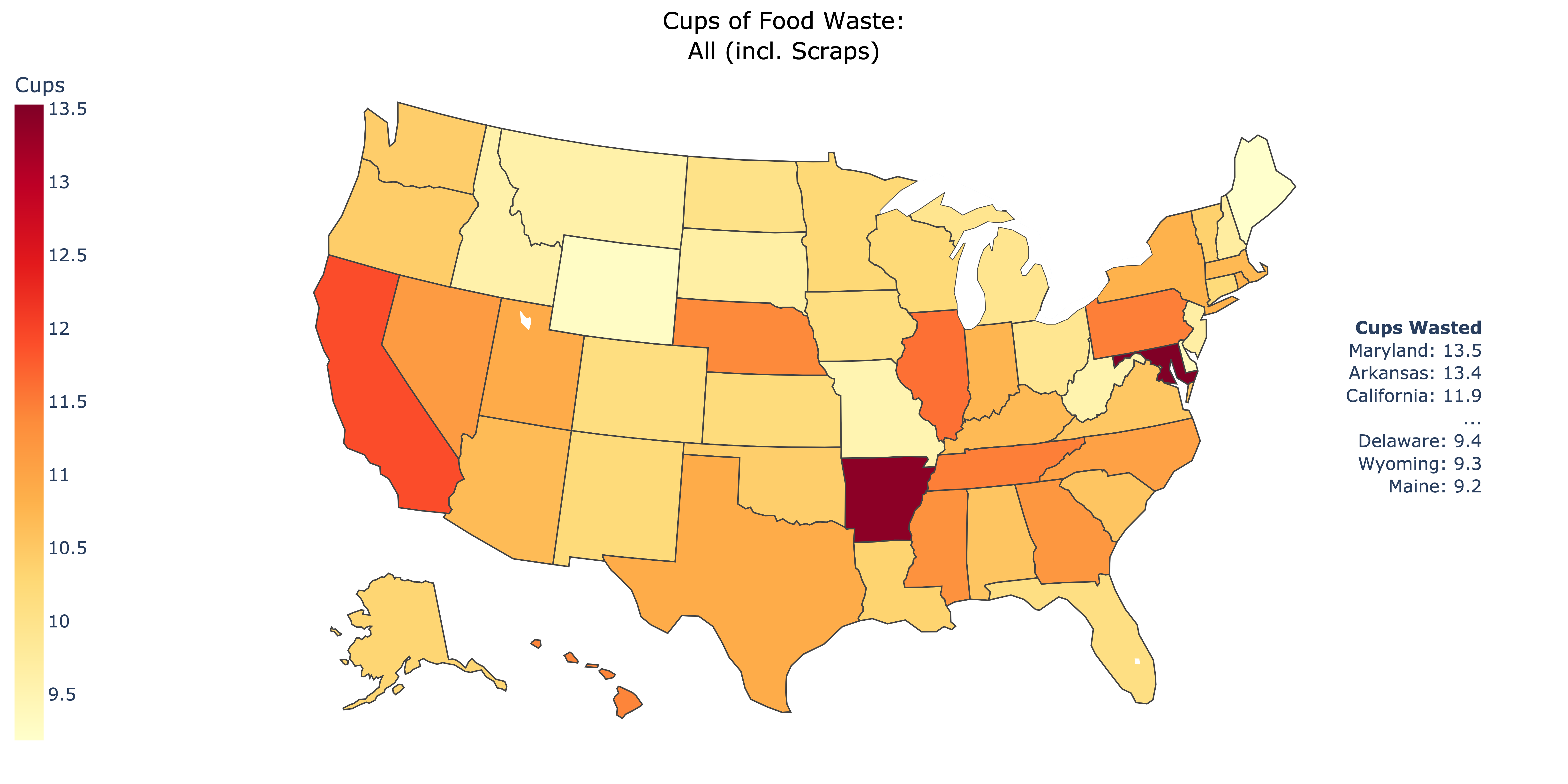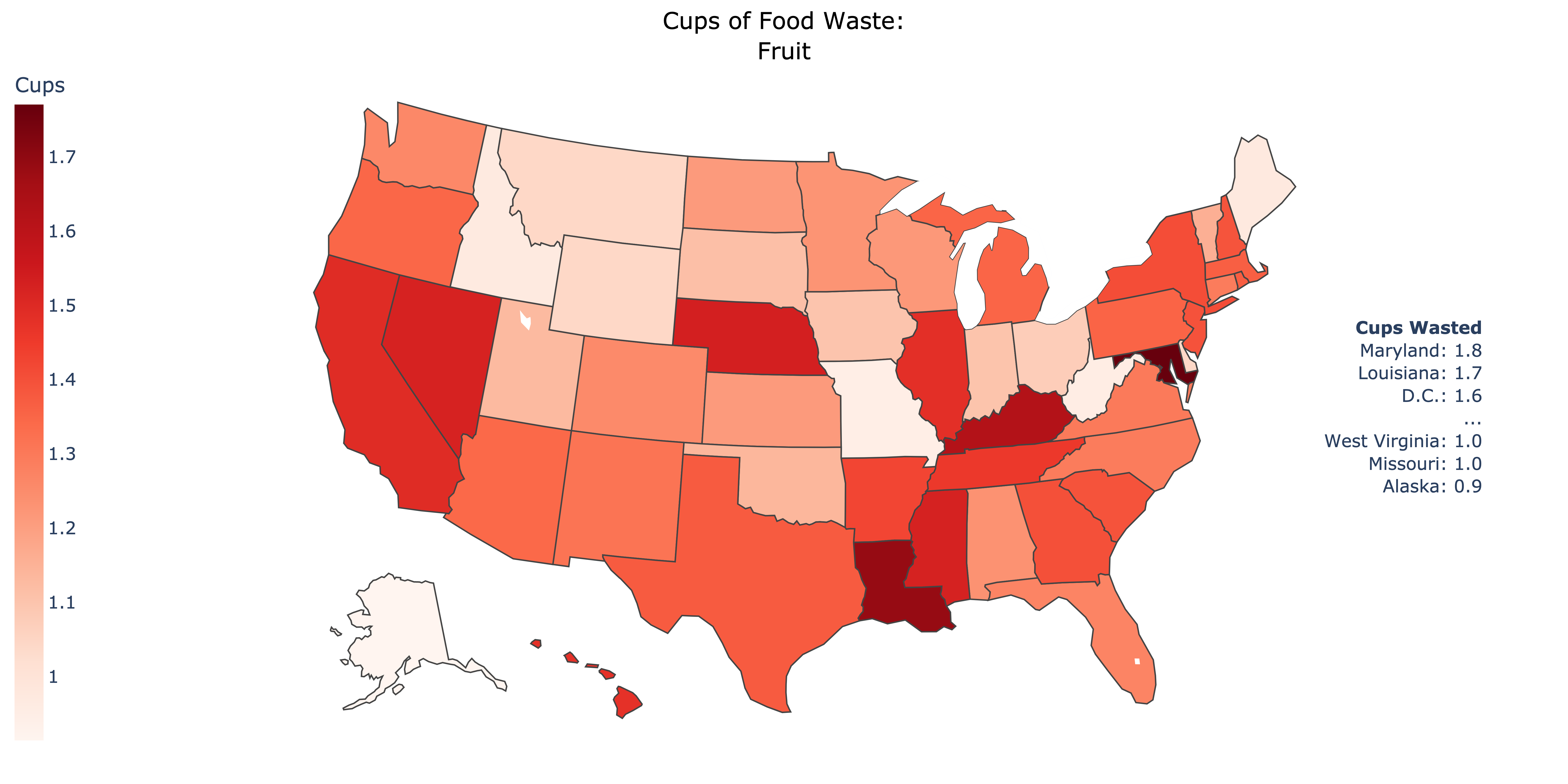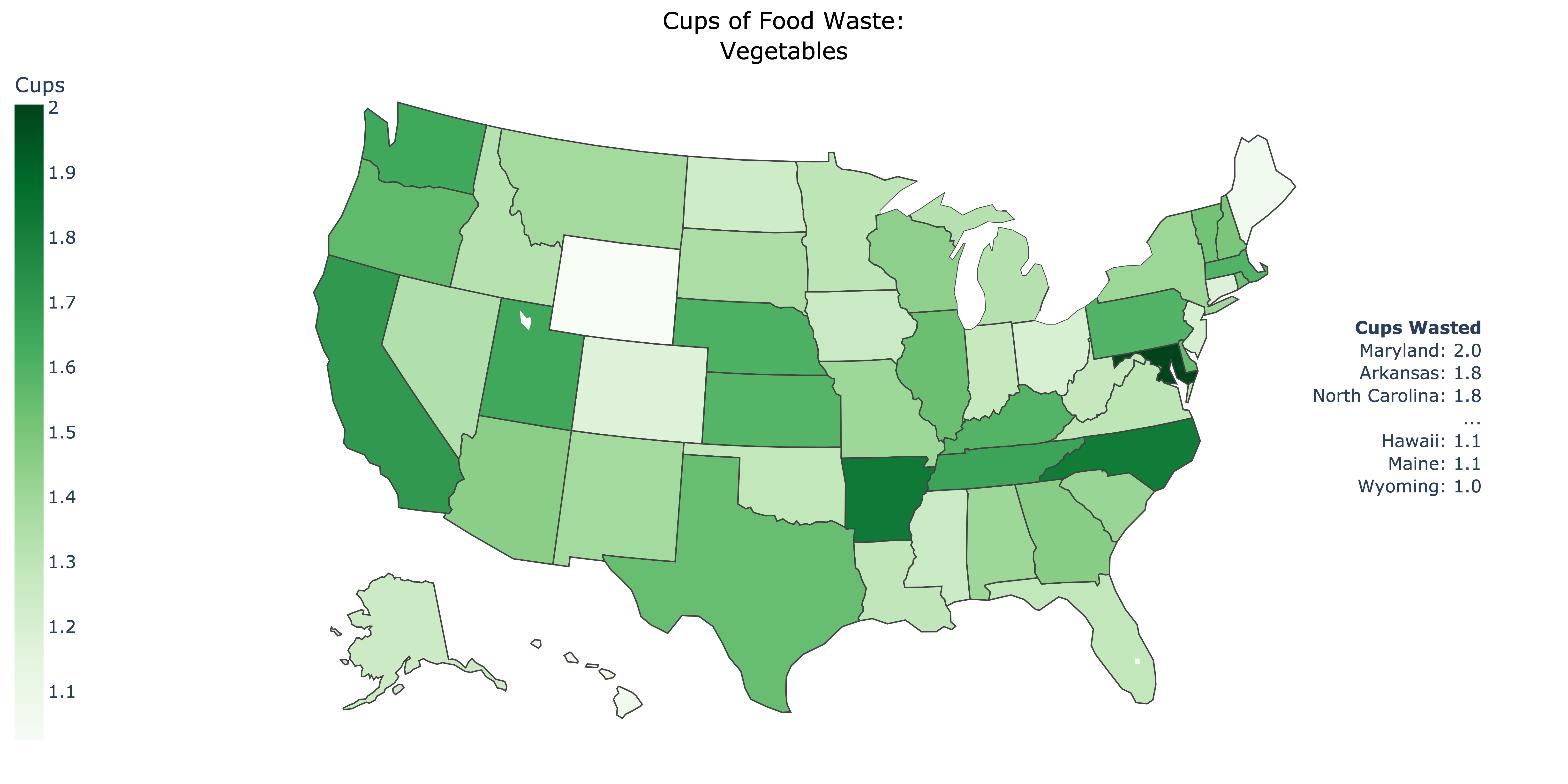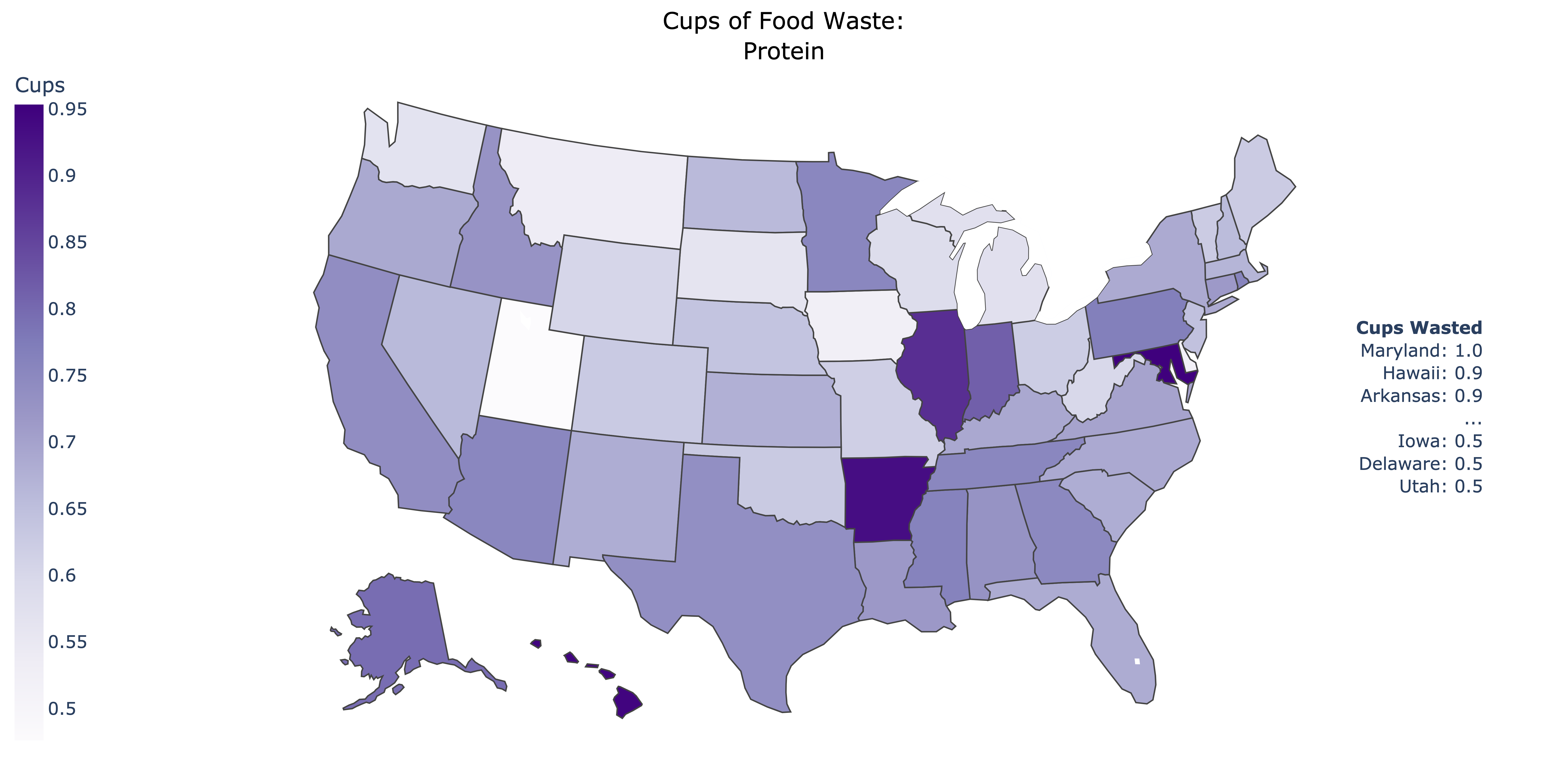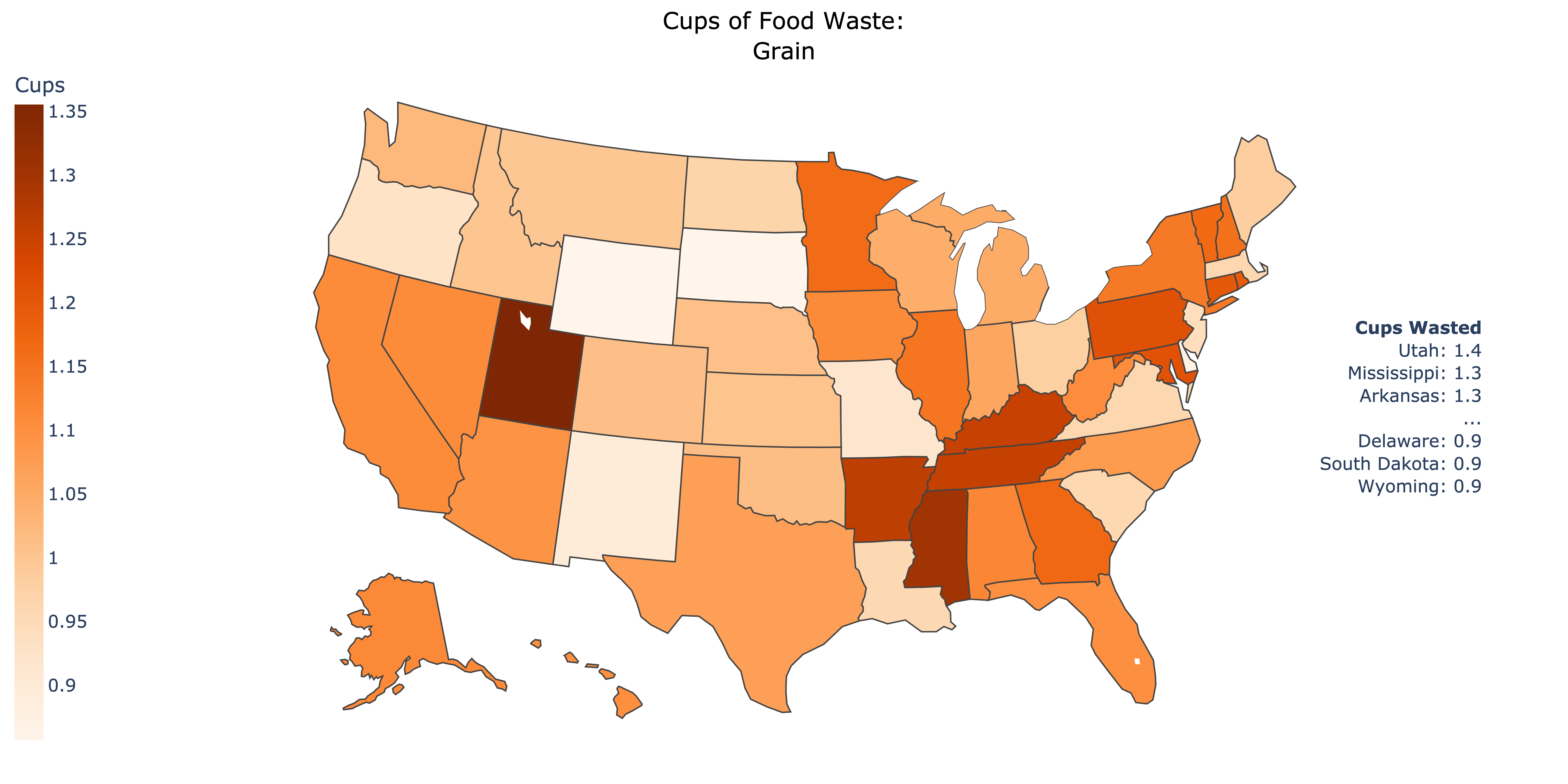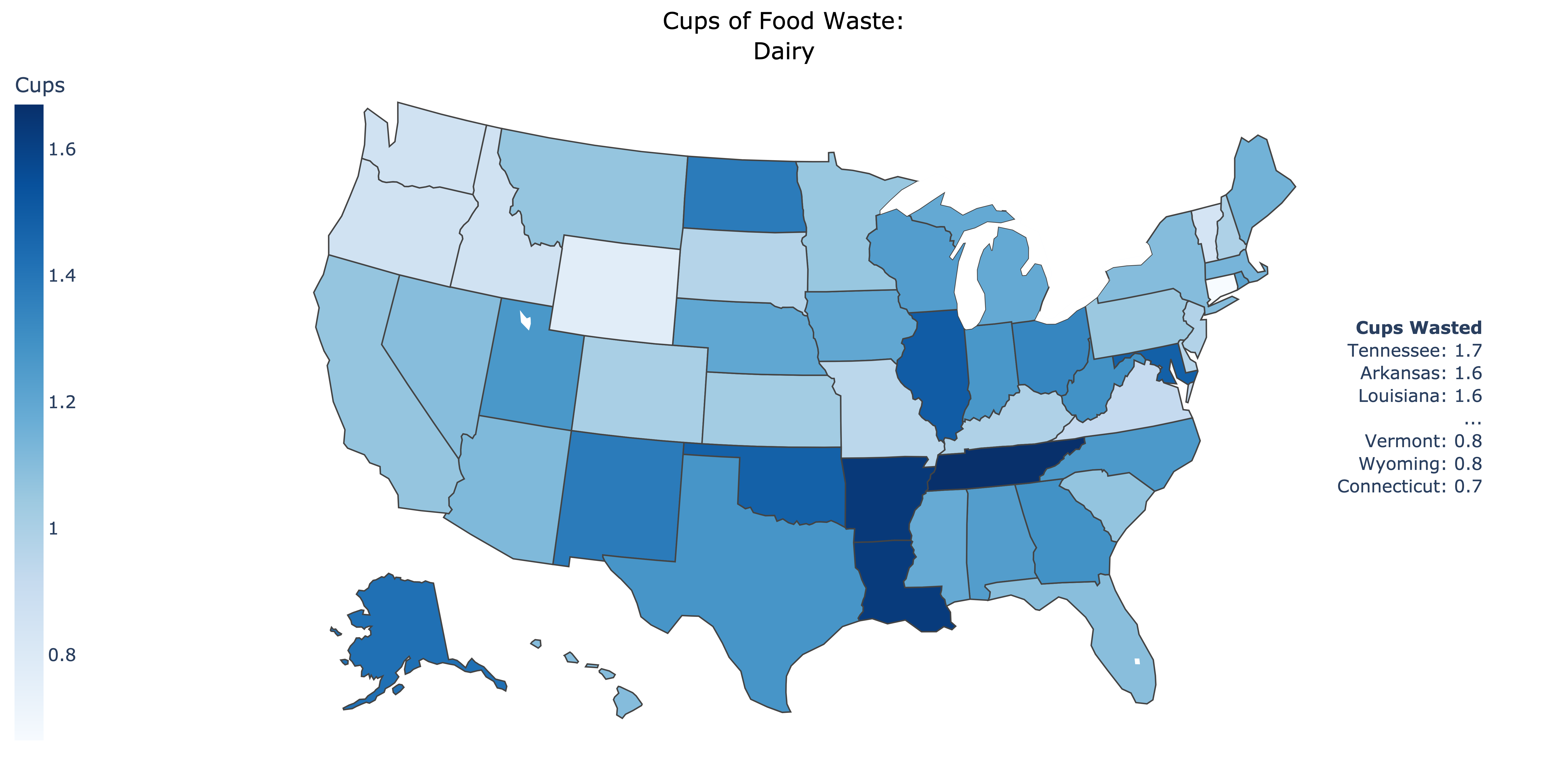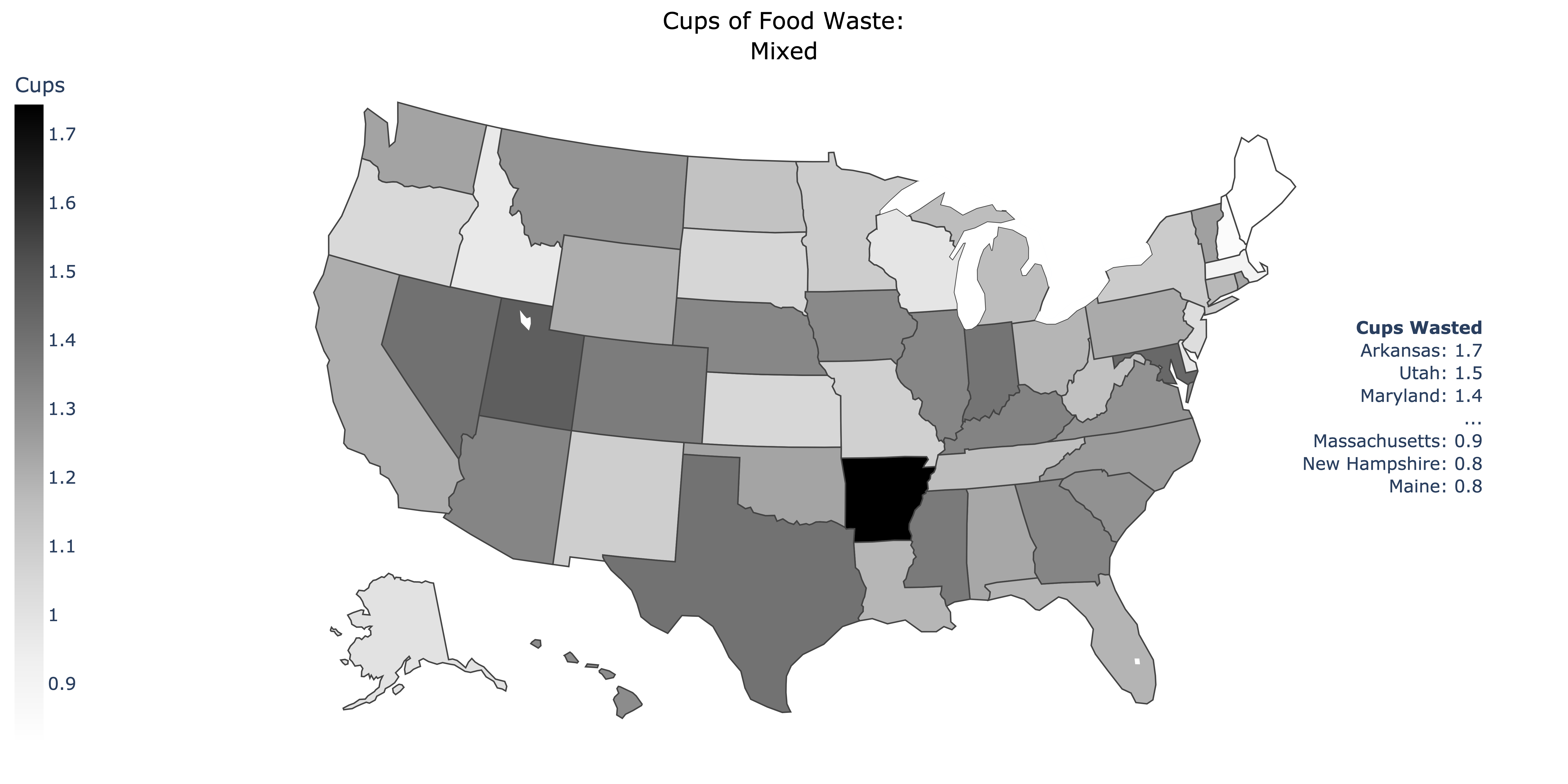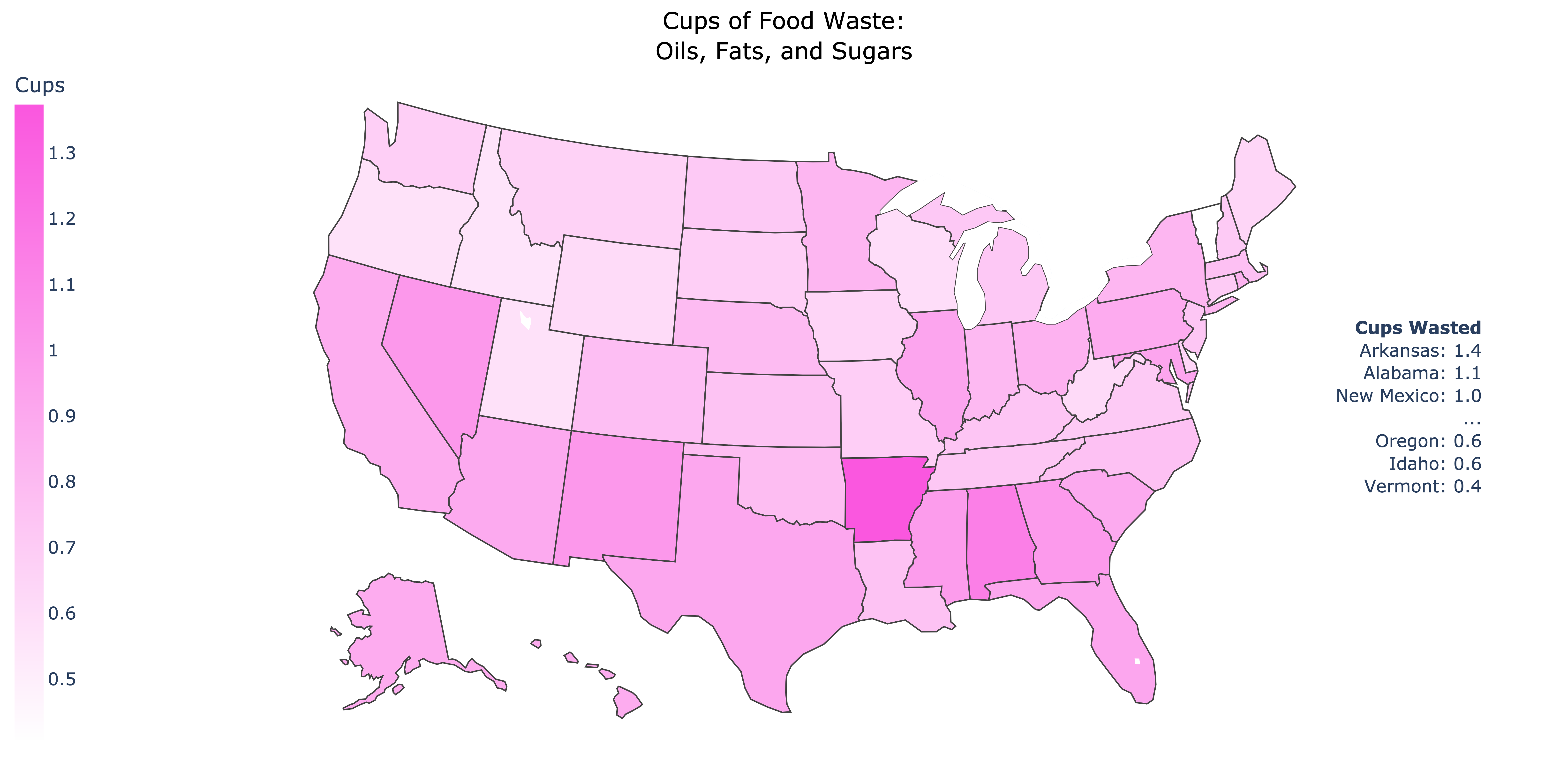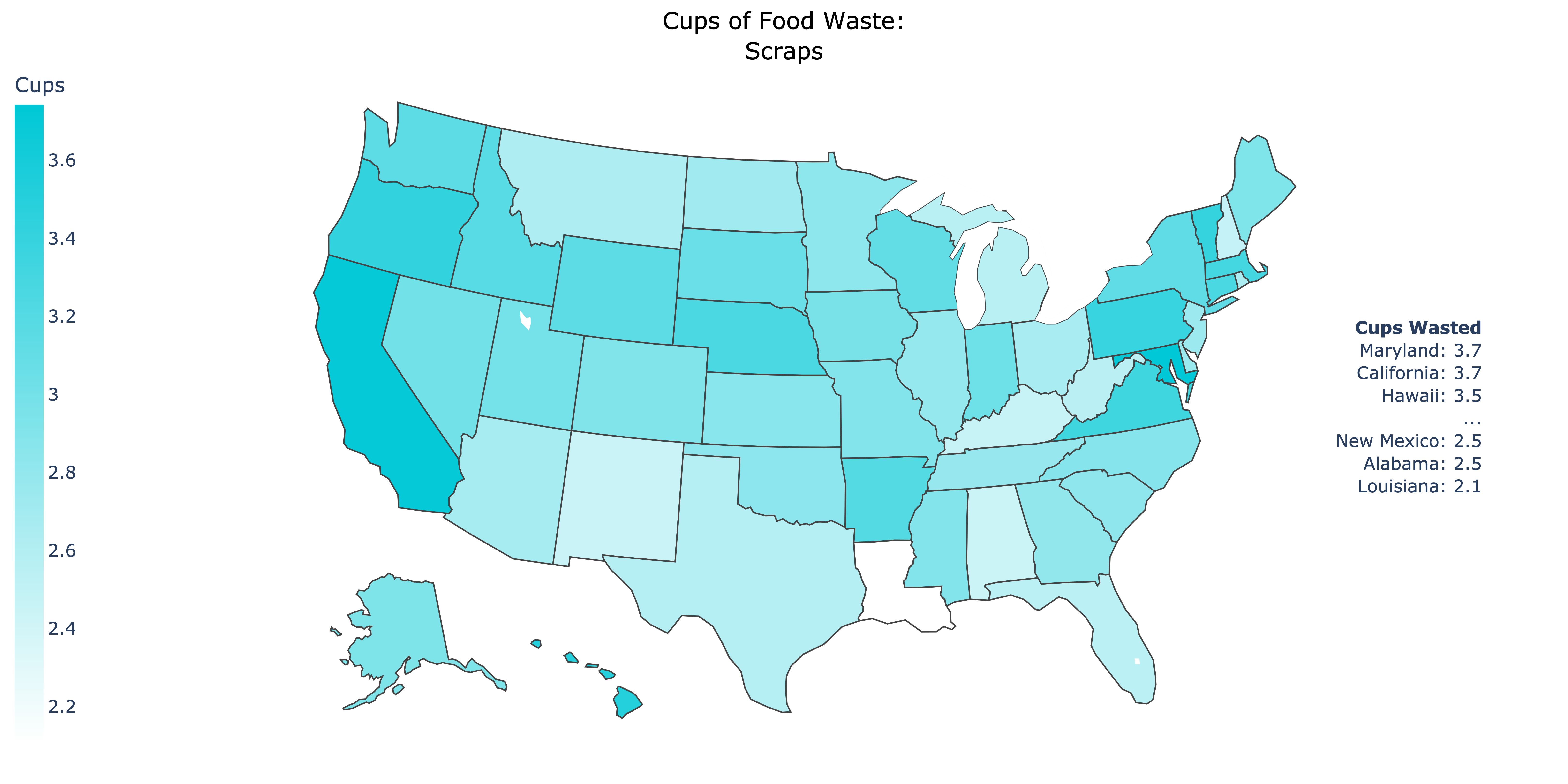the food we eat—
and throw away
What We Waste
Have you ever heaped your plate at a buffet, only to realize your eyes were bigger than your stomach? Or uncovered a container of unrecognizable leftovers? Maybe there was a tempting sale on the jumbo-sized bag of clementines, which you can’t possibly finish before they shrivel on the counter.
As much as we’d like to deny it, each of us has let food go to waste.
In fact, one-third of all food in America is wasted, with nearly half of that waste occurring within the home.
When food goes uneaten, valuable nutrients are wasted alongside all of the resources which went into the growth, preparation, transportation, and sale of that food—not to mention the money you spent to buy it: a mind boggling $1,500 per year for the average household.
Across the United States, producing food that is ultimately wasted consumes enough water to fill 9 million Olympic-sized swimming pools, produces greenhouse gas emissions equivalent to driving one million loaded semi-trucks across the United States, and uses an area of agricultural land equal to California and New York combined.
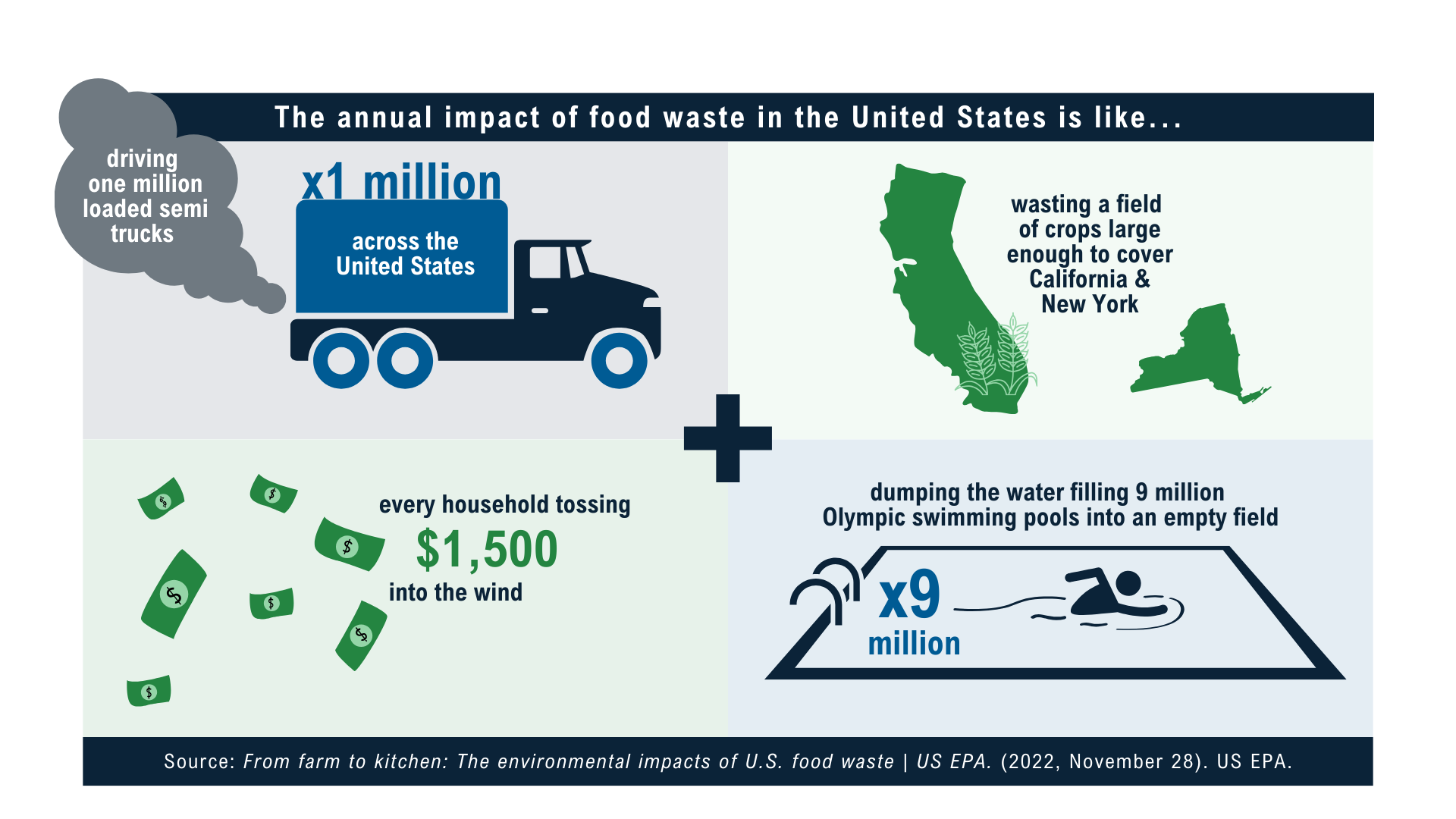
If the impact of food waste comes as a surprise to you, you’re in good company! Our survey revealed many Americans are unaware of the scale and consequences of our nation’s patterns of food waste, and are generally more concerned about aspects of food such as it’s price and healthiness.
The carrots you toss into the bin might seem inconsequential, but when you consider the bits of waste generated nearly every day by most households, it quickly adds up. In America alone, food waste could fill over 1 million dump trucks every year!
We all have the opportunity to be part of the solution.
By reducing food waste, we can reduce the need for land and resources used to produce food as well as the greenhouse gases released in the process.
Baseline Study
Motivated by a lack of nationally representative and state-level data on food waste, our study sought to quantify waste patterns across the United States and to identify factors which influence household food waste. This research was funded by MITRE’s Independent Research and Development Program and conducted in collaboration with Gallup.

MITRE applies systems thinking across government, industry, and academia to solve whole-of-nation challenges. We discover new possibilities through objective insight and trusted access that brings data to decisions. We lead by pioneering together for the public good, bringing innovative ideas into existence.

GALLUP delivers analytics and advice to help leaders and organizations solve their most pressing problems. Combining more than 85 years of experience with its global reach, Gallup knows more about the attitudes and behaviors of citizens, employees, customers, and students than any other organization in the world.
The State of Food Waste in america
MITRE and Gallup conducted a nationally representative study to better understand the state of food waste in America and raise awareness about factors that can help reduce waste.
Based on our survey of 9,259 Americans,
the average household wastes 6.2 cups of food across a typical week.
If scraps such as bones, peels, leaves are included, the average household produces 8.8 cups of weekly food waste.
Our study reveals insights into American kitchens: what do we waste, and why? Do we shop, portion, and store food in ways which prevent or reduce waste? Do we consider effects of waste on our wallet, on our hungry neighbors, and on our planet? What concerns do we have about the health, safety, or impact of food and the food industry which might influence our behaviors surrounding food consumption? Explore answers to these questions and more in the State of Food Waste Report, and see some key findings highlighted here.
Explore food waste patterns across the nation
Use the maps below to see the types and quantities of wasted food in the United States, measured in cups per household per week:
Note that state waste estimates were generated through a statistical procedure involving weighted prediction. For this reason, you may note that state estimates are higher than the national waste estimate, which is due to corrections employed via the statistical procedure. For more information, please contact the research team.

GET IN TOUCH
We want to hear your ideas and answer your questions!
Join us and help us increase our impact for people and planet.

